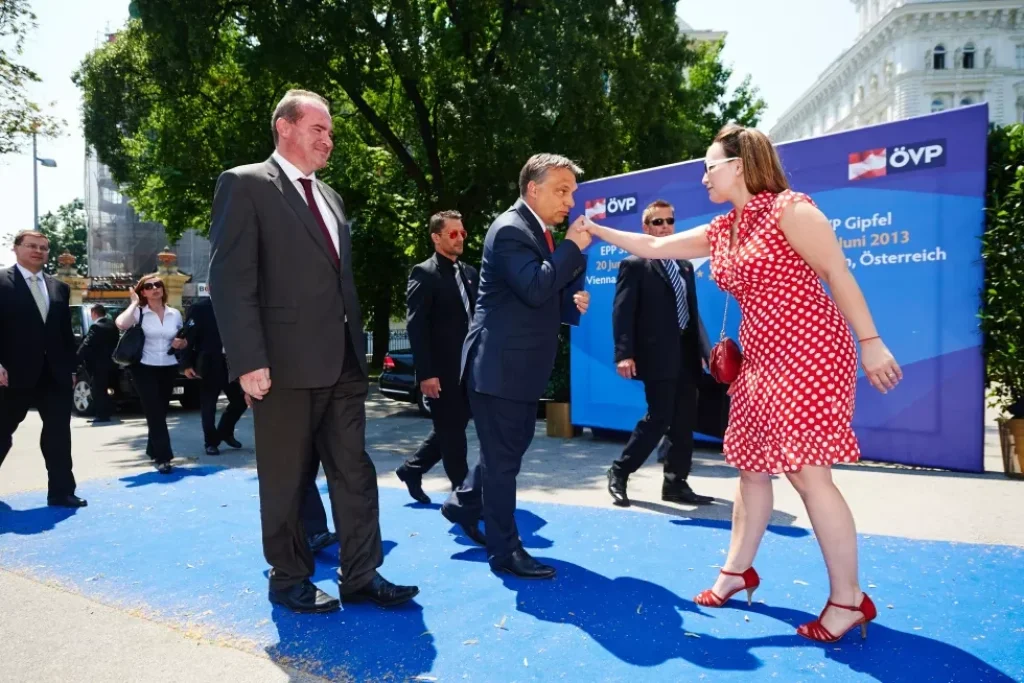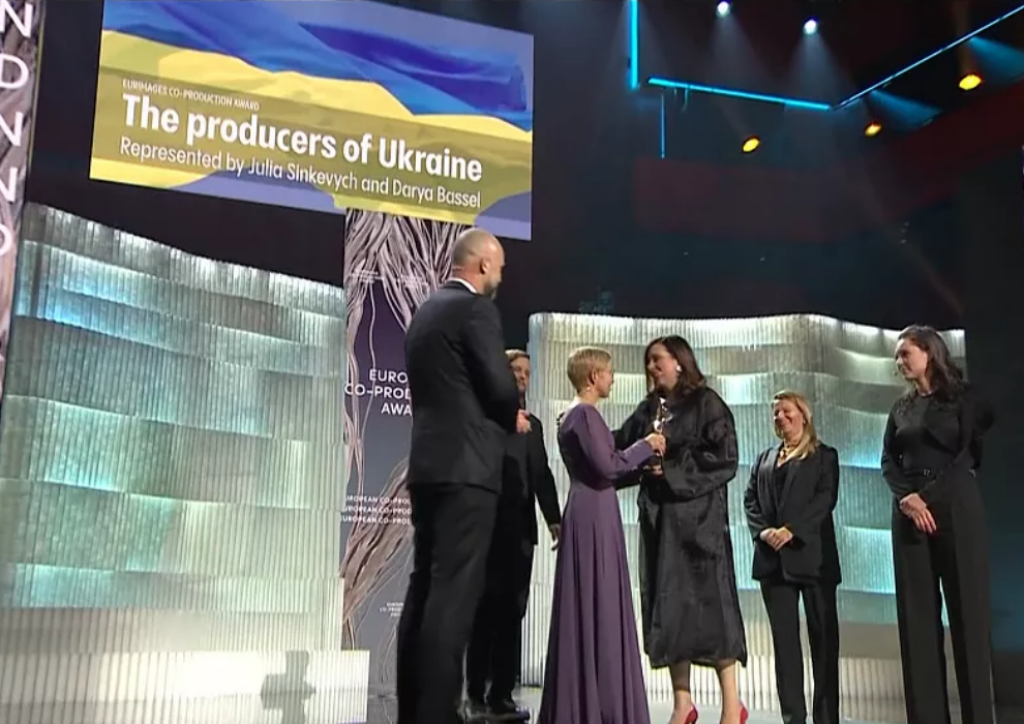Gergely Csányi is a sociologist, a member of the Working Group for Public Sociology “Helyzet,” and an assistant lecturer in the Department of Social Research Methodology at Eötvös Loránd University. His research field is the social-economic embeddedness and historical change of psychic structures, intimacy, sexuality, body conceptions and gender.
Sociological and political science accounts discussing the so-called “Orbán regime”— the Hungarian political regime from 2010 to the present, named after Prime Minister Viktor Orbán—invariably emphasize that the Fidesz party's election victory in 2010 interrupted Hungary's democratization process, which had been ongoing since Soviet collapse. Within this process, commentators usually interpret the Orbán government’s gender policy, in particular, as a flagship, alongside Poland, of a global backlash against women’s rights.
In this blog post, I argue that we can understand the symbolic gender politics of the Orbán regime better by viewing it in the context of overall trends in the short twentieth century. Furthermore, I argue that in the symbolic politics of Hungary as a semiperipheral country with dependent development, the symbolic positioning of the country, its so-called moral geopolitics, has always played an important role. The symbolic gender politics of the current Orbán regime should be seen in this light.
“Moral geopolitics” refers to the invention and construction of regions through the application of a moralizing narrative. “Good” or “bad,” “modern” or “premodern” regions are symbolically created in this way, and, at the same time, the process also involves the construction and maintenance of an unequal symbolic relation among different places, embedded in various trends over many decades.
The moral geopolitics of socialism was based on a Marxian teleology in which socialism is the post-capitalist stage in the sequence of societal evolutionary stages. Capitalism, in this framework, was born out of the crisis of feudalism, and socialism is to be born out of the crisis of capitalism—precisely in those countries where capitalism is most advanced. According to the Leninist version of Marx's modernization theory, colloquially known as “the weakest link,” the starting point of world revolution is not the most developed states of the capitalist world economy, but the dependent (in today’s terminology, semiperipheral) states—in practice, Russia—where, according to the logic of imperialism, the first condition to arise is that the broad masses of society “have only their chains to lose.” This rhetoric implies that the Russian semiperiphery is closer to the moral telos than the global core.
During the Stalinist period, this idea was embodied in the conception of “socialist morality” within gender relations. The notion of socialist morality was built on its “bourgeois” counterpart: both were based on pronatalism and other economic functions of the household. This genealogical link to the “bourgeois” world persisted despite the fact that, in official ideology, the “West” was morally rotten and bourgeois morality was a sham. By contrast, socialist morality was said to be authentic. In sum, the Stalinist concept of socialist morality was based on the assumption, rooted in Lenin’s “weakest link” thinking, that socialist gender relations were more advanced in Russia than in the “West”—and therefore, more “real” and “better.”
“It can be stated without exaggeration that the strength of people's democracy, like the warmth on a thermometer, can be quantified by the role played by women in it.”
As part of the Soviet Bloc, Hungary adopted this gendered moral geopolitics—fraught as it was with multiple contradictions. As Mátyás Rákosi, General Secretary of the Hungarian Communist Party, put it in the late 1940s: “It can be stated without exaggeration that the strength of people's democracy, like the warmth on a thermometer, can be quantified by the role played by women in it.” A few years later, he stated that “equalization particularly affects working women.” The progressive tendencies of the period, which were mostly based on the channeling of a large female workforce into self-sustained industrialization, were defined in symbolic gender politics in relation to pre-Second World War Hungarian bourgeois society, and equivalent systems in capitalist countries.
After the advent of the new economic mechanism, and in the wake of the crisis that began in the 1970s, good-quality “Western” consumer goods and films gradually spread in Hungary. This factor, alongside the strengthening of Western dependence, created a situation in which the image of the socialist bloc’s superiority could no longer be sustained. The development of a second, “gray-market” economy only increased the inequalities inherent in gendered divisions of labor. Social policy, too, moved in a more selective direction. At the same time, gender discourses became more heterogeneous. In late socialism, proliferating pop culture, pornography, pronatalist and anti-abortion discourse, and emerging sexual discourses all managed to coexist within a broader socialist framework, which, for instance, provided maternity leave that was much more generous than analogous policies in the “West.”
One of the main stakes in the symbolic struggle among political forces after 1989-90 was the country’s relationship with the Western core. On the whole, the left-liberal political forces and their allied elite factions have succeeded in politicizing the relationship with the West. The choice to do so was based on the assumption that, with civilizational progress and good economic policy, it would be possible to catch up with the “West” in economic, and hence in lifestyle, terms. Feminist NGOs, funded by Western donors that have largely adopted the Western European human rights-inflected framework of equality and bodily autonomy, fit well with this rhetoric. Since the 1950s, the hegemonic discourse, according to which domestic gender relations are superior to those of the “core,” had been replaced by the idea that Western-style gender relations are a model worth emulating. This idea was challenged by far-right actors, who claimed that, by promoting sexual promiscuity, homosexuality, and the right to abortion, Western (read: Jewish) forces, with the help of their allies in the Hungarian comprador elite, was corrupting local gender relations.
By 2008, the long decline of the US hegemonic cycle culminated in another global economic crisis. The crisis in the global core reached Eastern European states, including Hungary, which was linked to the core through a labor-intensive subcontracting model. In Eastern Europe, the 2008 global crisis shook the common belief in the superiority of the “West,” and reduced any desire to “catch up” with it. After that point, right-wing forces gained political capital by radicalizing conservative rhetoric and questioning the moral superiority of “Western” democratic models as such.
In Hungary, the 2008 crisis not only brought about economic and political realignments, but also wrought changes within moral geopolitics. European and Euro-Atlantic integration, and the EU, UN, and other international organizations managing them, were criticized for their (perceived or real) migration policies, all while Hungary positioned itself as the defender of Europe and “European values.”
In addition, criticism intensified in symbolic areas like the political independence of civil society, “politically correct” discourse, and the value of social diversity. “Gender” as an expression became a primary element of symbolic geopolitics. In Hungary, “anti-gender” campaigns began to unfold in 2017 around the Istanbul Convention. To come were the de-accreditation of the Gender Studies MA courses, in October 2018; the battle around transgender rights, in spring 2020; and persecution of LGBTQ+ people around the issues of adoption and school programming in 2021. These measures were embedded in a symbolic repositioning of the relationship with the Western core. The central element of the rhetoric is—as was the case in past decades—self-positioning towards the core. In line with far-right propaganda dating to the period after Hungary gained independence from the USSR, the symbolic gender politics of the Orbán regime is about defending “traditional” gender relations and “common sense” from “Western” (often "Brussels") “LGBTQ+ propaganda.”
This rhetoric simultaneously plays on compensatory self-love as a substitute for the illusion of “catching-up,” conceals the fact that the government is serving the core capital in many sectors, and symbiotically contrasts the Orbán regime with both the Western core and the post-change left-liberal elite. This gendered moral geopolitics is no less fraught with contradictions than socialist moral superiority, left-liberal “catching-up,” or far-right victimhood, but, for the time being, it seems that the Orbán regime has successfully aligned internal relations and external dependencies through gendered moral geopolitics. The symbolically and materially protected “traditional” gender relations also underpin the government's pronatalist efforts and its policy of integration into the international division of labor based on cheap labor.



